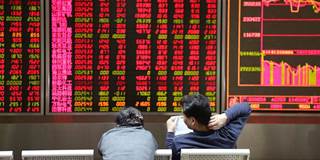Much of the world, especially the advanced economies, has been mired in a pattern of slow and declining GDP growth in recent years. But there are different types of forces that could be suppressing growth, not all of which are beyond our control.
MILAN – Much of the world, especially the advanced economies, has been mired in a pattern of slow and declining GDP growth in recent years, causing many to wonder whether this is becoming a semi-permanent condition – so-called “secular stagnation.” The answer is probably yes, but the question lacks precision, and thus has limited utility. There are, after all, different types of forces that could be suppressing growth, not all of which are beyond our control.
To be sure, there is a strong case to be made that many of the growth-destroying headwinds that we currently face would be difficult, if not impossible, to counter in the near term without endangering future growth and stability. The result of these persistent conditions can be called “secular stagnation one” (SS1).
The first indication that we are experiencing SS1 relates to technology. If we are, as the economist Robert Gordon argues, experiencing a slowdown in productivity-enhancing technological innovation, long-term potential growth would be constrained. But even if innovation has not dropped off too much, or picks up again soon, the structural adaptation and behavioral changes needed to take advantage of the concomitant productivity gains will take time.

MILAN – Much of the world, especially the advanced economies, has been mired in a pattern of slow and declining GDP growth in recent years, causing many to wonder whether this is becoming a semi-permanent condition – so-called “secular stagnation.” The answer is probably yes, but the question lacks precision, and thus has limited utility. There are, after all, different types of forces that could be suppressing growth, not all of which are beyond our control.
To be sure, there is a strong case to be made that many of the growth-destroying headwinds that we currently face would be difficult, if not impossible, to counter in the near term without endangering future growth and stability. The result of these persistent conditions can be called “secular stagnation one” (SS1).
The first indication that we are experiencing SS1 relates to technology. If we are, as the economist Robert Gordon argues, experiencing a slowdown in productivity-enhancing technological innovation, long-term potential growth would be constrained. But even if innovation has not dropped off too much, or picks up again soon, the structural adaptation and behavioral changes needed to take advantage of the concomitant productivity gains will take time.